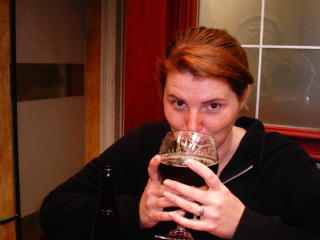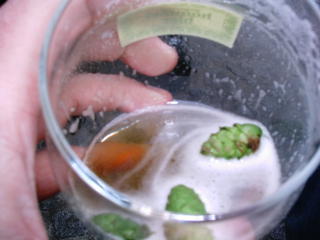ON THE AVENUES: I'd like nothing more than to go for another ride with Kevin.
A weekly column by Roger A. Baylor.
My column is a bit early this week, because two years ago today a fine fellow departed Planet Earth. Lightly edited to account for the passing year, here's a remembrance, as originally published on the 19th of October in 2017.
---
It’s October 23, and two whole years since Kevin Richards died.
I’d like to say my period of mourning is over, but this wouldn’t be entirely honest, as I’m not sure it ever began.
That’s because in a great many ways, I’ve simply refused to acknowledge Kevin is gone forever.
Flown down to Dallas for bar-hopping and a Cowboys game?
Gotten into one of those busy times at the shop?
Slipped out to go for a "century" before supper?
That explains it. He’ll be back soon, standing in the very same reserved spot by the bar. We’ll have a beer (or five) and share all the stories, and the world will make sense again.
Of course, I know it isn’t to be, although one thing is perfectly clear: While I have no issues whatever with the fine people up the hill at Silvercrest, I’m spooked, and in no hurry to visit the facility any time soon.
When Kevin was diagnosed with terminal cancer in August of 2016, he spent his final weeks under hospice care at Silvercrest. Four months later, so did my mother. I’m reasonably sure she was in the same room that Kevin had been, or perhaps the one adjacent to it.
Silvercrest’s staff members were universally kind and compassionate, but the convergence was a bit much. No more, please, at least for a while.
Regular readers know that Diana and I recently traveled to Europe, spending the bulk of our time in Poperinge, Belgium and Haarlem, Netherlands.
Kevin was a big fan of both these places, and when we returned to them a month ago, each bicyclist I saw pedaling past – there were hundreds in all – reminded me of the epic beercycling times we had.
It will surprise absolutely no one to learn that our acquaintance began in the late 1980s over beer, not bicycles. Kevin started patronizing Scoreboard Liquors, the package store where I worked, and after a brief lull (I believe he moved to Indianapolis for a short time) we met again when the Public House came into existence in 1992.
To say that Kevin was a fixture there is to be guilty of criminal understatement, and it bears repeating, now and always: If the pub had its own Mt. Rushmore, Kevin would be one of the four faces.
Beer obviously was a shared theme of our friendship in the early years, and then a bit later, bicycles. Kevin often rode motorcycles, although I’ll always contend that human-powered transport was a better match for his innate, personalized zen. Going for bicycle rides -- and refueling afterward -- suited him well.
I helped get Kevin into better beer. He definitely helped get me into a bike saddle.
A group of pub-going cyclists gradually came together, and one late summer's day in 1999, Kevin and I rode to the top of the Knobs via Corydon Pike's switchback grade. We stopped to sag at Polly’s Freeze, the venerable ice cream haven.
An earnest discussion began. Might we venture a biking trip to Europe?
And -- heaven forbid -- have a few fine ales in the process?
The planning began. We booked hotels at three beer-oriented urban venues in Belgium, along with rental bikes for day trips radiating from each stop. Faxes (!) and e-mails were sent, and the itinerary came into shape. As the calendar turned to June, 2000, there were five of us ready to make the journey, and it proved to be a classic.
A beercycling group was born, and as many as 15 of us took part in a total of seven trips in nine years, with the last occurring in 2008. Kevin was along for four of the seven, and without his guidance, I'd have lacked the confidence to "lead" the other ones, although in fact all of these trips were genuine group efforts.
Kevin and I conceived, orchestrated and performed those beercycling trips together, and while the cast revolved, each time out we functioned as a band of brothers (and on a couple of occasions, sisters).
I’m not exaggerating when I say that Kevin’s bicycling advocacy changed my life. My European travel instincts were joyfully reborn. During previous journeys to the continent, I'd dodged bicyclists while walking between train stations, never stopping to consider how much fun it might be to ride myself.
Correction: Actually,
never stopping to consider that I could do it. Kevin patiently tutored me about the art of the possible on two wheels, with or without panniers. It wouldn’t have been possible without him.
By 2003, I was able to take my bike apart, pack it in a hard shell case, reassemble it, ride it all the way from Frankfurt to Vienna (meeting friends along the way), and get the bike and me back home without incident after a month on the road.
As a humanities major with almost no technical aptitude, I've never been more proud of myself, and eternally grateful to Kevin for showing me how.
Our partnership was mutually reinforcing. We’d pause by a river, and I’d prattle on about a Jacobite revolt in a neighboring town. Then Kevin would explain the hydraulics of the locks and dam we were observing. I’d score a brewery visit, and he’d calmly repair a spoke. Kevin had his life, and I had mine. Not all our interests intersected. When they did, life was great fun.
I’ll ride again in Europe some day, even if it’s two miles on flat ground with a rental bike.
It won’t be the same. It can't.
Back in the spring of 2016, Kevin was as hale and hearty as ever. It wasn’t for nothing that people called him Moose. I ran into him one day at the pub. He was in his usual nook spot, hale and hearty, with a pint in his hand. He began prodding me in his mischievous but always purposeful manner.
Had I been riding?
Was I going to start?
Really?
Walking?
What was my problem, anyway?
Kevin notched it up. We needed to get the band together again, and start planning a trip. It might be a simple reunion, or perhaps even a bang-up finale, but we needed to do it soon, before we got too old.
The chat lasted an hour, and I emerged buzzed and enthused. Later I told Diana it was inevitable. There'd be another ride somewhere in Europe in 2017.
Alas, the cosmos had a different sort of journey planned for Kevin, and we made the trip without him, and also without the bikes. Several toasts were made, one with a providential bottle of Westvleteren 12, using the immortal beercycling mantra of Bob Reed.
Here’s to us.
May we never quarrel or fuss.
But if by chance we should disagree,
Fuck you – and here’s to me.
Here’s to Kevin. I miss him.
A lot.
---
Recent columns:
October 18:
ON THE AVENUES: As long as the Democratic hierarchy keeps the Human Rights Commission under its thumb, it's hard to be optimistic.
October 11:
ON THE AVENUES: Clamming up is hard to do, but I'm trying my best.
September 30:
ON THE AVENUES SPECIAL EDITION: As David White's mayoral campaign begins, let's briefly survey the electoral landscape.
September 28:
ON THE AVENUES: If this is adulting, I’d rather be leaving on a jet plane.










































